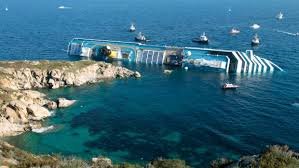Depends on what part of the world and what airline you're talking about. I think you would have an extremely rude awakening in Asia, SE Asia, India, Africa, etc. And when you roll in cultural issues on the flight deck (one of the primary contributors to the Asiana 777 hitting the riprap at SFO) it is a very worrisome situation.
The people I get my information from are not individual airline pilots like yourself but industry analysts who take a much larger view of what's going on at airlines of all types, not just the majors, all over the planet.
You can believe me or not, but the people here and at Airbus and at organizations like IATA are extremely worried about the developing trends that are being seen all over the planet with regards to training, the rapidly escalating shortage of pilots, and the ballooning demand for air travel particularly in those regions I mentioned. Something has to give and what's giving is experience and knowledge on the flight deck.
One of the major airframe manufacturers recently refused to sell one of their airplane models to an airline in one of these regions specifically because they knew the pilots and flight department at this airline--- the national airline of its home country--- were not up to the task of operating them safely. The manufacturer actually turned down a substantial sale because of safety concerns with the airline.
And the US air transportation industry is not exempt from this global trend. In the course of various projects I've been shown a number of specific examples at US carriers, large and small, where inexperience and/or less-than-ideal training resulted in a serious incident-- and in some cases an accident--- that would most likely have not occurred had the emphasis not been put on operating the systems but on flying the airplane. Some of these have been a at carriers one might never suspect as being susceptible to this problem.



 Also the autopilot has a soft pad that controls the pump that I mostly use instead of that big wheel. A stern thrust is still on the want list.
Also the autopilot has a soft pad that controls the pump that I mostly use instead of that big wheel. A stern thrust is still on the want list. 


